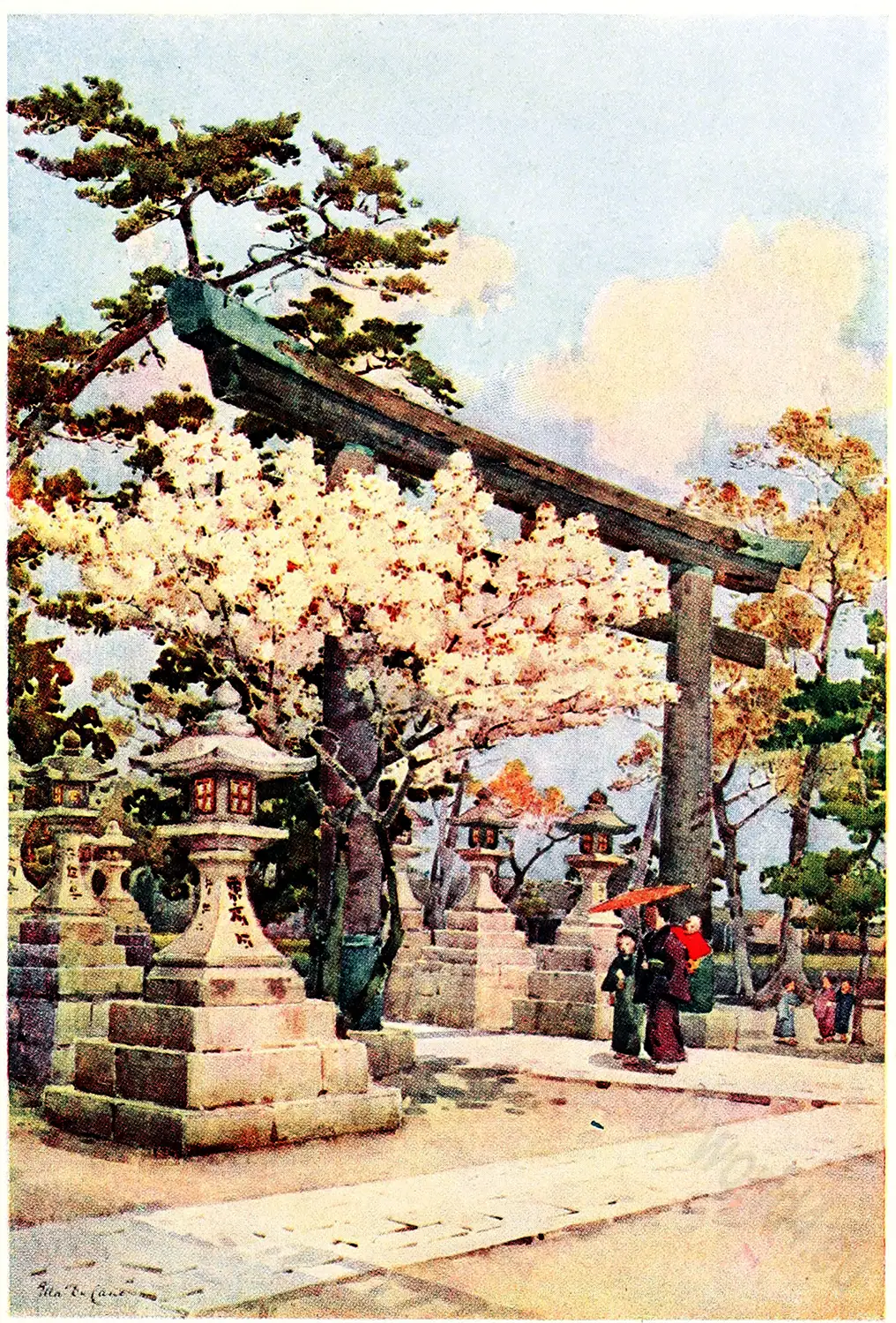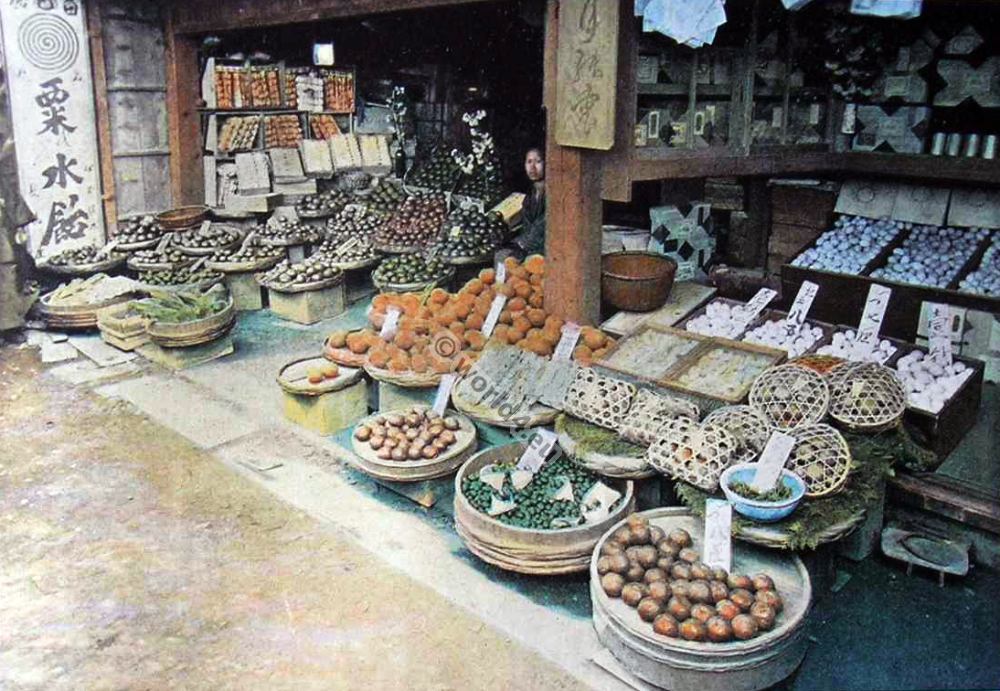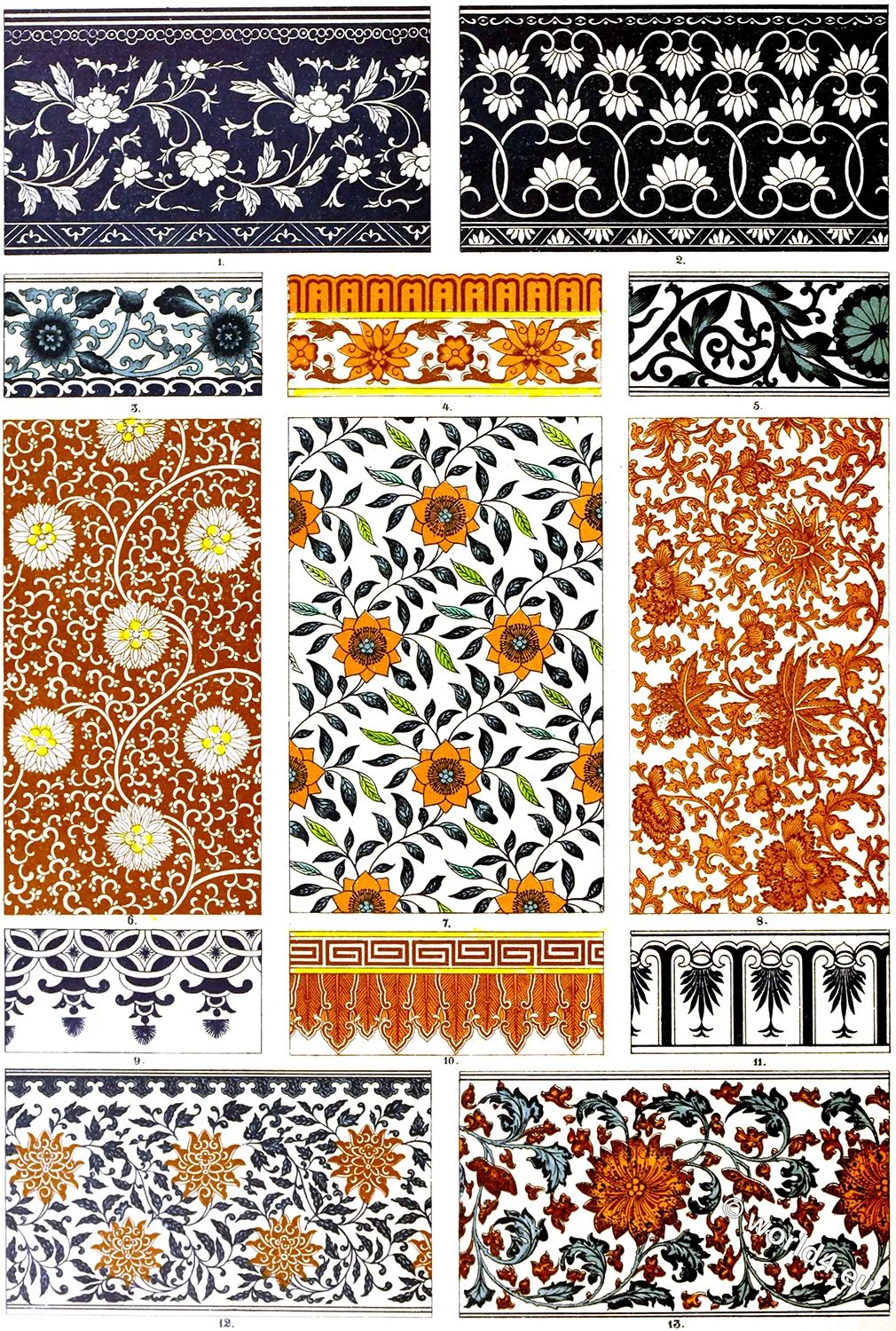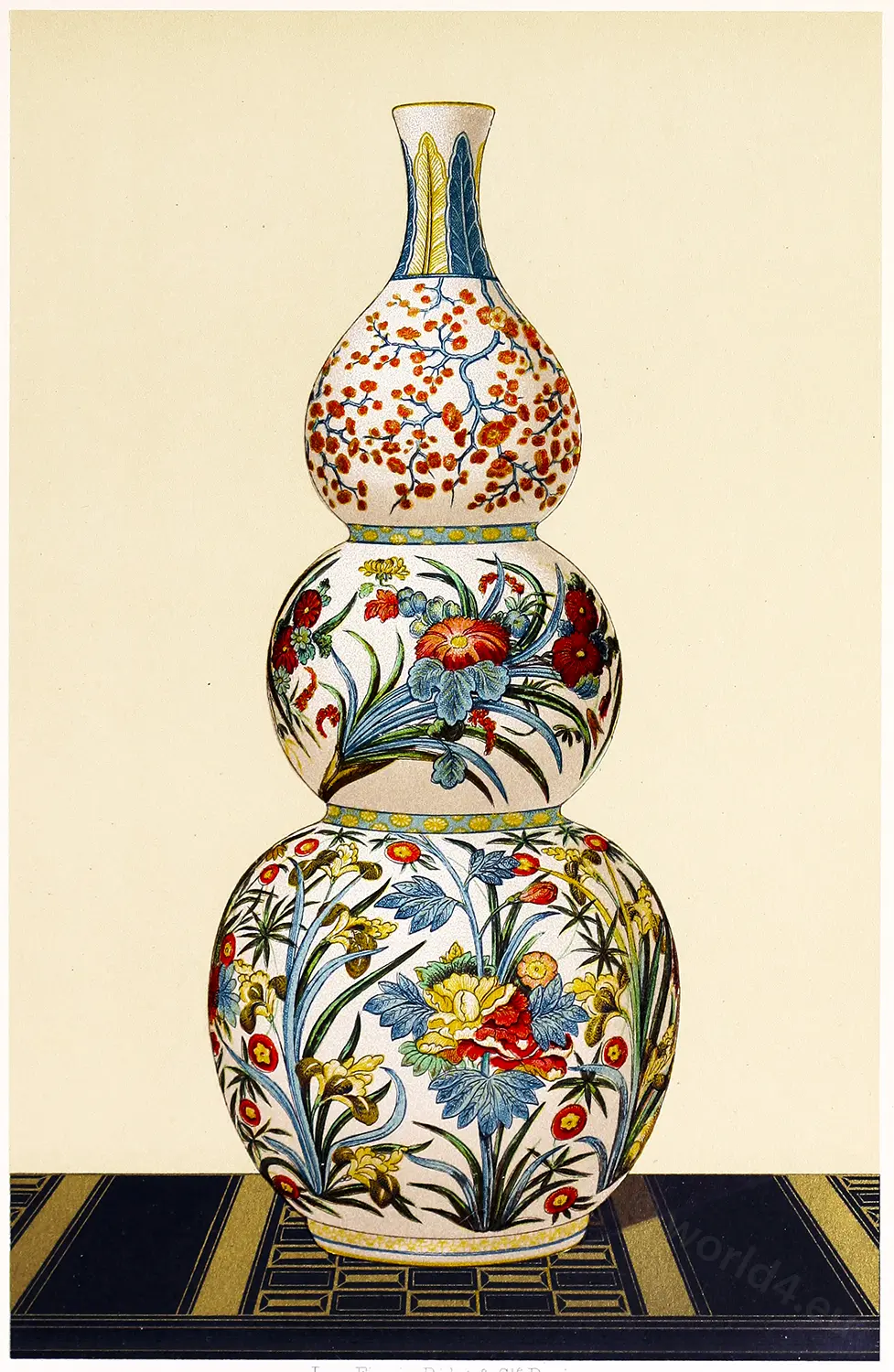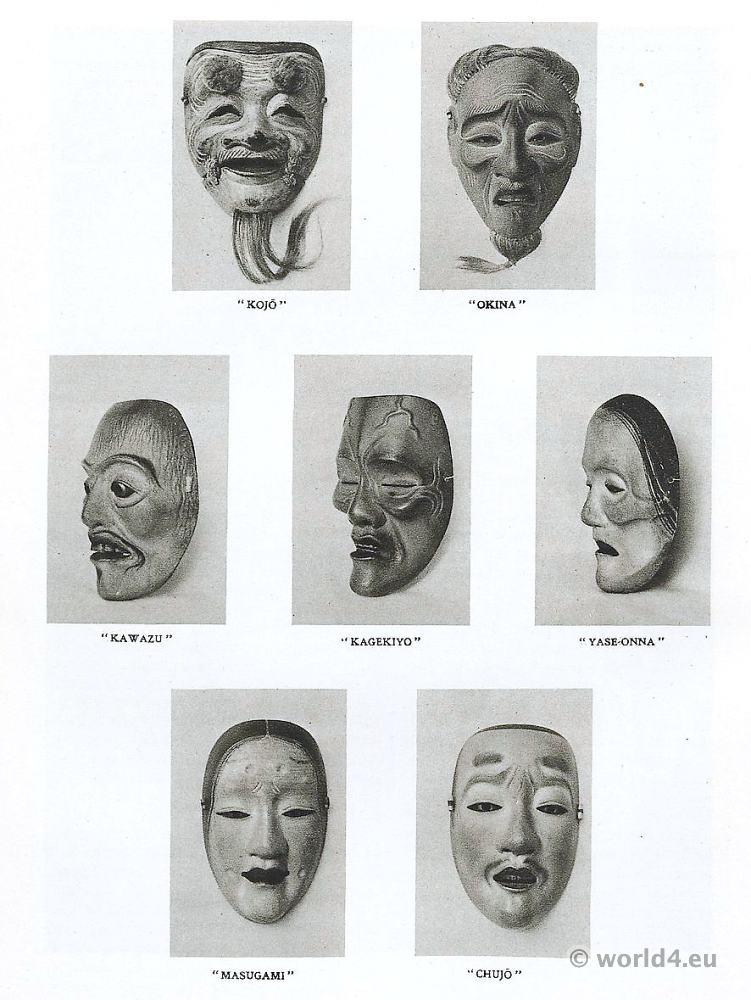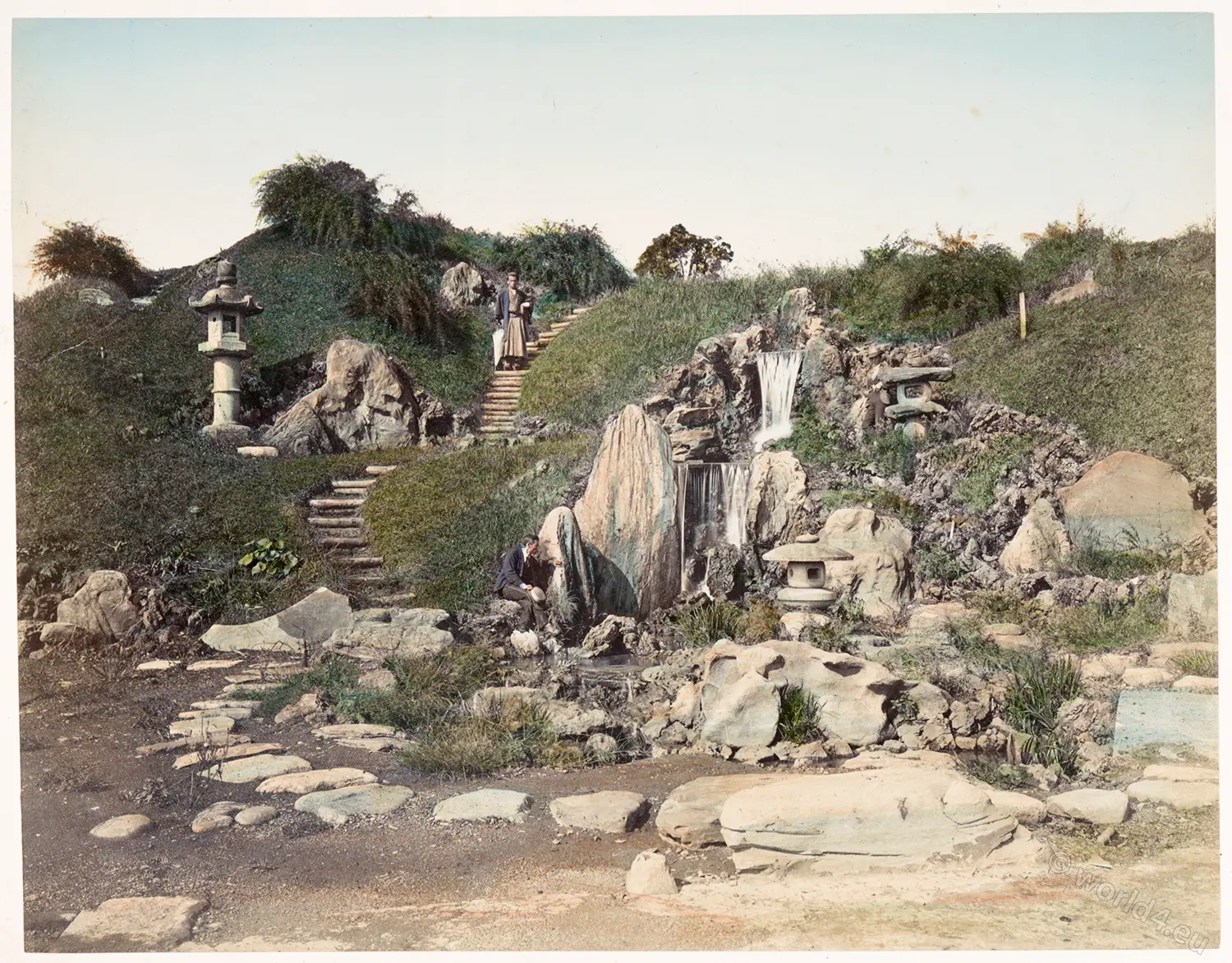SECTION EIGHTH.— PLATE VI.
MODELLING.
Japan. Kakiyemon porcelain.
by George Ashdown Audsley
A MORE perfect and self-asserting example of the art of the Japanese modeller than the beautiful Statuette which forms the subject of the Plate now under review, has never, to our knowledge, left Japan. An inspection of such a work goes far to remove the reproach under which Japanese art has lain in matters appertaining to the rendering and treatment of the human figure.
KAKIYEMON, the modeller and painter of this Statuette, was a celebrated artist and potter of the seventeenth century. He is reputed to have introduced in Japan the art of painting porcelain with enamel colours. Previous to his time all the porcelain made in the country is said to have been either plain white or decorated with under-glaze blue. KAKIYEMON’S usual style of decoration consisted of small floral devices in colours; accordingly this Statuette must be looked upon as a remarkable, and probably unique, effort of the master.
The courtesan Usugumo of Tama-ya
The Statuette represents USUGUMO, a celebrated lady of Yoshiwara, who lived towards the end of the seventeenth century. She is said to have been a woman of great beauty and high intellect, skilled in literature and art, and the friend of the most celebrated artists and men of letters of her time.
The pose of the figure and the treatment of the drapery are extremely graceful; while the details and colouring of the ornamentation are rich and singularly harmonious throughout.
Notwithstanding the native type of face, with its striking peculiarities, it is replete with an air of sweetness and refinement, which, associated with the pose of the body, imparts a general feeling of distinction to the work.
The Statuette is modelled in porcelain of the finest quality, evidently direct from the hand of the artist, and perfect in every respect. Height 16 inches.
In the possession of Ernest Hart, Esq., M.R.C.S., of London.
Source: The ornamental arts of Japan by George Ashdown Audsley. Lithographer: W. Greve. Printer: Low Sampson Marston, Searle & Rivington. Imprimerie Lemercier et cie. Plates published by Sampson, Low & Co. Paris, and W. Greve, Berlin 1882.
A legend from the Genroku period of the Edo period tells of an oiran (courtesan) who always carried a cat with her. This courtesan was Tamaya uchi Usugumo and people rumoured that she had been bewitched by a demonic cat. One man believed the rumour and cut off the cat’s head. However, the decapitated head of the cat bit a giant snake lurking in the toilet and saved Usugumo’s life. A regular customer then gave Usugumo a wooden carving in the shape of a cat. This is how the lucky beckoning cat, now known as the Maneki-neko, came into being.
Discover more from World4 Costume Culture History
Subscribe to get the latest posts sent to your email.




